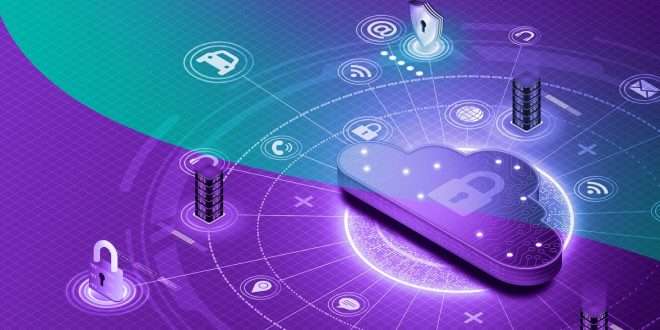As a proficient SEO and Copywriter, we understand the criticality of securing SOAP web services and safeguarding sensitive data. In this comprehensive blog, we will explore the best practices to ensure the utmost protection for your web services. We’ll delve into the key aspects of securing SOAP web services, offering practical insights and expert advice to help you fortify your system against potential threats. Let’s embark on this journey of enhancing the security of your SOAP web services.
Understanding SOAP Web Services
Before delving into security measures, let’s briefly understand SOAP web services. SOAP (Simple Object Access Protocol) is a protocol used for exchanging structured information in the implementation of web services. It allows applications to communicate with each other over a network using XML as its message format. SOAP web services are widely utilized for integrating diverse systems and platforms, making security paramount.
The Significance of SOAP Web Service Security
In the modern interconnected world, securing web services is crucial to safeguard sensitive data from unauthorized access and potential cyberattacks. As SOAP web services deal with the exchange of critical information, any security breach can have severe consequences, ranging from data leaks to service disruptions.
Encryption and Data Privacy
To ensure data privacy, all sensitive information transmitted via SOAP web services should be encrypted using robust algorithms such as AES (Advanced Encryption Standard). Encryption renders the data unreadable to unauthorized individuals, enhancing security during data transmission.
Authentication and Authorization
Implementing a robust authentication mechanism is vital to verify the identity of SOAP web service users. Techniques like username-password authentication, X.509 certificates, or tokens can be utilized. Additionally, proper authorization mechanisms should be in place to grant access to specific resources based on user roles and permissions.
Use of HTTPS for Transport Layer Security
Utilizing HTTPS (Hypertext Transfer Protocol Secure) ensures the encryption of data during transit. By employing SSL/TLS certificates, you create a secure channel for communication, preventing data interception and man-in-the-middle attacks.
Input Validation and Sanitization
Thoroughly validating and sanitizing all incoming data is vital to prevent potential injection attacks, such as SQL injection and XML injection. Input validation ensures that only expected and safe data is processed, reducing the risk of code exploitation.
Web Service Firewall
A web service firewall acts as a protective barrier against various types of attacks, such as XML bombs, DDoS attacks, and cross-site scripting. By analyzing SOAP messages, the firewall can detect and block suspicious activities, mitigating potential threats.
Regular Security Audits and Penetration Testing
Conducting periodic security audits and penetration testing is essential to identify vulnerabilities in SOAP web services. Penetration testing helps simulate real-world attacks to assess the system’s security readiness and effectiveness of implemented security measures.
Error Handling and Logging
Proper error handling and logging are crucial for detecting and resolving security incidents promptly. Detailed error logs provide valuable insights into potential security breaches and aid in incident response.
Secure Coding Practices
Following secure coding practices is fundamental to ensuring the overall security of SOAP web services. Developers should adhere to industry best practices, avoiding common vulnerabilities like buffer overflows and insecure deserialization.
Regular Updates and Patches
Keep your SOAP web service components and dependencies up to date. Regularly apply security patches and updates to eliminate known vulnerabilities and bolster the overall security posture.
Security Awareness and Training
Invest in educating your development and IT teams about the latest security threats and best practices. Raising awareness about security issues fosters a security-conscious culture within the organization.
Final Words
Securing SOAP web services is not an option but a necessity in today’s digital landscape. By implementing encryption, strong authentication, using HTTPS, and adhering to secure coding practices, you can significantly enhance your SOAP web service’s security. Regular audits, error handling, and awareness training complement these measures, making your system robust against potential threats. Safeguarding sensitive data is a shared responsibility, and with these best practices, you are well on your way to ensuring the safety and integrity of your SOAP web services.
Commonly Asked Questions
Q1: Can I use SOAP web services for mobile applications?
A: Yes, SOAP web services can be utilized for mobile app integration, enabling seamless communication between your mobile app and backend systems.
Q1: Are SOAP web services more secure than RESTful APIs? (H4)
A: Both SOAP and RESTful APIs can be secure if implemented correctly. However, SOAP provides built-in security features like WS-Security, making it a preferred choice for enterprise applications.
Q1: What is the role of WS-Security in SOAP web services? (H4)
A: WS-Security is a standard for ensuring the security of SOAP messages by providing mechanisms for encryption, digital signatures, and authentication.
Q1: Is SSL/TLS sufficient for securing SOAP web services? (H4)
A: While SSL/TLS provides encryption for data in transit, other security measures like input validation and authentication are equally important for comprehensive security.
Q5: How frequently should I conduct security audits for my SOAP web services? (H4)
A: It is recommended to conduct security audits at least annually or whenever significant changes are made to the SOAP web service architecture or functionalities.
 webfily
webfily



